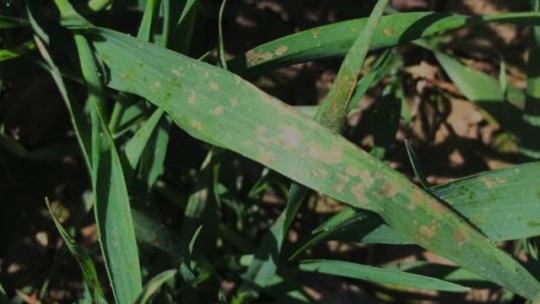Difference between the physiological reaction and blight in wheat treated with foliar spray of liquid nitrogenous fertilizer (UAN)
The most common worry of all farmers using or thinking of using liquid nitrogenous fertilizer is that it causes blight to the crops. That is not true. There is a great difference between a physiological reaction and blight. The physiological reaction is a reaction that the plant shows after it was given an easy-to-absorb nitrogen, and therefore the plant does not use its own energy to produce nitrogen. Such reaction causes the older leaves and those at the top of the plant to become yellowish. That is a reaction by the plant and is a sign that the active substance has been absorbed by the crop.
Of course, every single sort reacts differently. Such reaction may be strongly manifested. Currently, such strong reactions are observed in Avenue sort and less manifested in sorts like Balaton and Enola. The Department of Agrochemistry and Soil Studies performs tests and accumulates a database on how different wheat sorts react in different parts of the country. The yellow colouring of crops being treated with UAN does not mean the crops are in bad condition, that the vegetation will be slowed down, or that this will impact yields – on the contrary. A beautiful green plant is not always a sign of fewer diseases and higher yields.
A physiological reaction is normal after application of liquid fertilizer. At a later stage a more intense growth is observable, the stems are straighter and the green leaves become darker.
The difference between a physiological reaction and blight is clear in the photos.
Physiological reaction

Blight

For farmers who have decided to apply the entire fertilization technique onto winter and spring crops and more specifically onto wheat, there are a few key elements one should definitely pay attention to, and react on a case-by-case basis for each farm or field. We are talking about the scheduling of fertilization throughout the vegetation period (autumn and spring-summer vegetation) and the introduction of the active ingredient in amounts that are in accordance with the sort and the planned yield per field. The right moment of preparing the working solutions, the choice of suitable nozzles to apply UAN, the mixing with products for plant protection, micro elements and the like also have their specifics that must be put into the equation.
Each farmer best knows the characteristics of their crops, soil, yield per sowing and the planted sorts. If you provide us with information about your field, we will prepare the optimal technique for nitrogenous fertilization with liquid fertilizer for each crop.